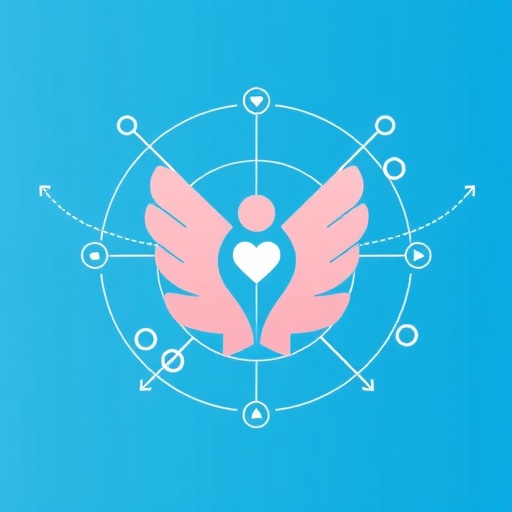
Artificial Intelligence (AI) has emerged as a transformative tool in various sectors, and public health is no exception. The urgency of ending the HIV epidemic in the United States by 2030 is a call to action for public health agencies and organizations. Traditional methods of disseminating information about HIV prevention and testing require significant financial investment and can often lack systematic assessment of their effectiveness. This represents a crucial gap in public health strategies, especially when timely and impactful communication is necessary to reach vulnerable populations, such as men who have sex with men (MSM).
Research conducted by Dolores Albarracin and her colleagues has unveiled a compelling solution to this challenge. By leveraging AI, they are able to sort and classify public health messages related to HIV prevention and testing. The study’s methodology consisted of collecting a vast array of public health messages from various sources including federal agencies, non-profit organizations, and researchers active on social media platforms. The breadth of data ensures that the AI model is trained on diverse inputs, leading to a more sophisticated understanding of what messages resonate with specific demographics.
The strength of the classification model lies in its ability to pinpoint messages that are not only actionable and relevant but also effective. By utilizing machine learning algorithms, the researchers were able to identify messaging that adhered to predefined criteria. This technological advancement enables public health officials to maintain a real-time approach to their campaigns, an essential feature considering the rapidly evolving landscape of social media engagement and public health communication.
.adsslot_M831tLPHUA{width:728px !important;height:90px !important;}
@media(max-width:1199px){ .adsslot_M831tLPHUA{width:468px !important;height:60px !important;}
}
@media(max-width:767px){ .adsslot_M831tLPHUA{width:320px !important;height:50px !important;}
}
ADVERTISEMENT
The impact of this study was quantified through an online experiment conducted among MSM as well as a field experiment with public health organizations. The findings were striking. Messages that had been classified by the AI model as persuasive were six times more likely to be selected for reposting by both government and community agencies across various U.S. counties compared to standard posts about HIV prevention. The implications of this discovery are profound: effective message tailoring can drastically enhance community engagement and awareness surrounding HIV.
Furthermore, the study revealed that the target demographic expressed greater interest in sharing AI-selected posts online. This could lead to a snowball effect in social media sharing, thereby amplifying the reach of essential public health messages. As we consider the nature of modern communication, the viral nature of social media can be harnessed effectively to disseminate crucial health information, making AI an indispensable partner in public health efforts.
Community-based organizations often operate under tight budgets and stringent timelines. By employing AI to select and curate public health messages for reuse, these organizations can streamline their efforts significantly. This not only conserves resources, allowing teams to focus their energy elsewhere, but also increases the frequency with which prevention and testing information is shared within communities. In an era where misinformation can spread rapidly, this initiative provides a reliable mechanism for amplifying evidence-based health messaging.
The findings of this research highlight the potential for AI to lead a paradigm shift within public health. Increasing the efficiency, effectiveness, and relevance of health campaigns is crucial for meeting the ambitious goals set by national initiatives aimed at tackling HIV. AI can facilitate a more tailored approach, speaking directly to the audiences that health organizations wish to engage. This level of customization in health communication is often challenging to achieve through traditional means.
As we stride toward 2030, harnessing technology will be pivotal in maintaining momentum in the fight against HIV. The ability of AI to refine our messages also serves to highlight the importance of adaptive strategies in addressing public health challenges. Future campaigns can take advantage of real-time data analytics to ascertain which features of messaging are most persuasive, making it possible to shift strategies on the fly based on audience reactions.
We must also consider the ethical implications of using AI in public health messaging. Transparency in the algorithms used, as well as clarity about the data sources, will be essential for ensuring trust among community members. Adopting AI should not only focus on efficacy but also on equitable access to these advancements to ensure that underserved populations receive the support they need.
Engaging the community in the research process is vital. Community feedback can enhance AI models, making them more responsive to real-world concerns and cultural nuances. This could lead to more respectful and culturally sensitive communication approaches that resonate deeply with target audiences, climbing beyond mere numbers to forge meaningful connections.
The ultimate goal of any successful health campaign, particularly in the case of ending the HIV epidemic, is to empower individuals with knowledge. By employing AI as a tool for message optimization, public health agencies and organizations can more effectively guide communities toward preventative measures. This collaborative effort between technology and public health professionals marks a significant advancement in combating health crises.
In conclusion, the marriage of artificial intelligence and public health communication represents a revolutionary step toward more effective messaging strategies. As public health challenges become increasingly complex, innovative solutions like this will be essential in addressing them. The journey toward ending the HIV epidemic is intricate, but with AI’s support in curating impactful messages, we are significantly more equipped to succeed in this important mission.
Subject of Research: AI-driven public health messaging for HIV prevention
Article Title: Living health-promotion campaigns for communities in the United States: Decentralized content extraction and sharing through AI
News Publication Date: 17-Jun-2025
Web References: [Not Available]
References: [Not Available]
Image Credits: [Not Available]
Keywords
Health and medicine, Human health, Public health, Applied sciences and engineering, Computer science, Artificial intelligence
Tags: AI in public health messagingAI-driven analysis of health communicationdata-driven health interventionseffective communication for vulnerable populationsHIV prevention strategiesimpact assessment of health messagesinnovative approaches to HIV educationleveraging AI for health outreachoptimizing public health resourcespublic health communication technologiesreal-time public health campaignstargeted messaging for MSM communities




